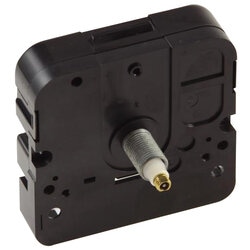
+1 888 123 4567
Just How Clock Movements as well as Motors Operate

Clock movements and also electric motors are the significances, the engines, of wrist watches. Clock movements and also motors could be digital or analog, digital or mechanical, yet their primary objective is to position each hand at the right subtended angle moment by minute. These interested gadgets have existed for centuries in various kinds, and they show an abundant background.
Clock motors as well as movements are equivalent from each various other in their definition, though the term "motion" often tends to be preferred by the profession, while "electric motor" interest the layman. Until reasonably just recently they were mechanical in their operation, with a pressure of curled springtimes or hanging weights using torque to a flywheel. The resulting rotation was exchanged an oscillation at a particular frequency by aid of pendulums and escapements.
The contemporary engines are not mechanical, however digital. The energy resource is a quartz crystal, which, with voltage applied to it, gives off pulse trains at its fast reverberating regularity. The pulses are counted and built up into mathematical registers, as well as partitioning the counts generates the matching of running secs, mins, and hrs. chime clock movement with pendulum
This equivalent is actually a quantity of rotation-- really a built up turning-- for each and every hand. The old mechanical technique made use of a network of equipments to accomplish brief hand position and a differential according to each tick of the pendulum. The digital approach makes use of math to determine short-lived placement from the register worths.
These are the basics of timekeeping using an analog display screen of dial plus hands. But don't fail to remember that timekeeping is regular, meaning that the display screen is cyclical as well as whatever at some point resets to zero, as it were. One of the most typical duration is twelve hours (midday looks the like midnight), but better durations are possible as well as periodically used.
A noticeable expansion is the 24-hour period, yet there is absolutely nothing to avoid the once a week or monthly period being programmed, and also much longer ones are obviously feasible. The clock movement just needs to be set up as necessary. Mechanically this needs entirely sprucing up the equipment network, however electronically it is simply an issue of programming-- a much easier job.
Time expansions often require an extra hand (e.g., to aim at the day of the week or the date in the month). More complex electric motors can track lunar cycles and also show tide degree. Because of its periodicity (though out of sync with the solar cycle), it is straightforward to incorporate tide-level display screen with common timekeeping.
Movements can likewise be coopted, in a feeling, to show numerous climate phenomena. The dial is altered to show a variety of worths around the area, and a solitary hand moves within that range. The actions is not cyclical (temperature level, stress, as well as moisture vary rather arbitrarily in between extremes), so sensors determine worths minute by minute, as well as the worths are converted into hand position.
Modern digital clock movements are well outfitted to benefit from software program abilities to equip substantial ranges of attributes, practically limited only by the imagination. A few of these attributes are novelties similar to those located in heirloom watches, such as chimes as well as oscillating pendulums (which are no longer useful however totally cosmetic). Internet vendors have broad choices of components to pick from.
One point the visitor need to recognize is that manufacturers layout clock motors to persuade a broad range of dimensions, catering to the fat part of the marketplace. The dials, hands, instances, and so forth, can be bought individually yet match up in regards to dimension as well as style. Nevertheless, when diameters of watches overcome 12 to 14 inches, the longer as well as larger minute hands obtain more challenging and also tougher to turn correctly.
At this moment the one-design-fits-all approach breaks down, however the provider ought to have available a functionally identical motor with beefed-up torque. Similarly, consider the different sizes of battery used to power clocks (usually AA or C) and also pick what works best for your demands.
Whether as a hobbyist or as a specialist, clockmaking from components can be rewarding as well as fulfilling. Success stops by understanding how clock movements as well as electric motors run.